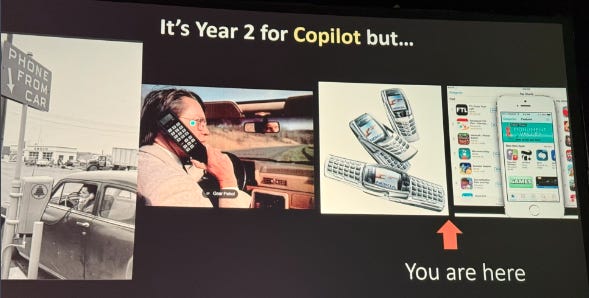I attend multiple conferences each year and always take plenty of notes. Until now, I’ve mostly kept them for my own reference. But I’ve decided it’s time to start sharing them with you.
If you’re a paid subscriber, you’ll get exclusive access to:
Notes from talks and workshops I attended
Key insights and ideas that stood out
Summaries, photos, and useful links for further reading
To see my overall take on the event, read: Quality Engineering in the Age of AI - My Takeaways from StarEast 2025
Below are my personal notes from the talks that stood out:
How to Get AI and Agents to Stop Being Weird
Speaker: Dona Sarkar
Summary
Dona shared a solid perspective on what agentic AI really means. A lot of what people label as agentic AI is just automation, like getting a new recipe emailed every Monday. True agentic AI can reason, adapt, and use automation to achieve specific goals.
Notes
My Latest Arch Nemesis
The AI Bros (formerly the Bitcoin Bros) claimed AI would eliminate all jobs.
But every decade, something new is supposedly going to kill software engineering: offshoring, low-code, “vibe coding.”
First AI CEO? That’s a laugh.
AI is not going to take your job.
Why Are AI Agents a Thing?
We have predictive AI, generative AI, and agentic AI.
Agentic AI acts independently, makes decisions, and reasons through tasks.
It can correct itself and take initiative without needing constant input.
Most current uses are just API calls combined with some automation. That’s not agentic.
Example: using OpenAI to send an email is automation, not agentic AI.
Dona calls this “sparking automation”:
Agentic AI Workflow
There are three core activities that agents need to perform (not listed in full here, but implied to include reasoning, action, and goal pursuit).
Right now, agentic AI is where mobile phones were in the car phone era.
Clippy has returned… Microsoft has added AI to everything.
Some tools are genuinely useful, especially in domain-specific contexts.
The Cost of Building Agents
Agentic design principles are essentially just good design principles.
Becoming an AI power user is becoming a career skill.
LinkedIn Study Says
Most leaders say they would rather hire someone with AI skills than someone with traditional experience.
I doesn’t fully believe that, but it’s what the data shows.
Beginners ship version one of their AI tool and stop there.
Experts ship version twenty, because they know where AI tends to break.
Building Buy-In
Ask yourself how committed your stakeholders are to AI.
Their level of buy-in determines how far you can go.
Focus on what people value. Or more accurately, what they stand to lose if they’re not invested.
The Future
We need real guardrails and security around AI.
AI is going to be a core part of daily life.
Documentation should be AI-readable: one long page with a copy button at the top.
Robotics is how AI becomes physically useful. Expect more movement in this space.
Embodied AI—AI that interacts with the physical world—is likely to be the next major shift.
Time for Vibe Coding
Speaker: Malissia (last-minute replacement)
Summary
This was a last-minute keynote, but Malissia delivered an impressive live coding session using Cursor IDE. She showed how we can use AI effectively by working in small steps, giving it detailed context, and applying just enough constraint to stay in control.
The result? Useful tools - not necessarily production-ready applications, but practical programs that help us solve problems as testers. From generating tests and making small fixes to building mini-tools that boost our productivity, there's a lot we can do.
One of the highlights for me was how she got the AI to create a plan first, then walked it through the task step by step. It was a great demonstration of how testers can leverage AI as a creative partner.
Notes
Keep reading with a 7-day free trial
Subscribe to Quality Engineering Newsletter to keep reading this post and get 7 days of free access to the full post archives.












